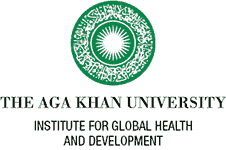Leaving No One Behind: Rebuilding School Health and Nutrition to Address the Impact of COVID-19 on Learning
Background
COVID-19 pandemic is an unparalleled global shock for development that is massively interrupting progress towards the Sustainable Development Goals (SDGs). The scale and stringency of measures to mitigate the pandemic, including closure of businesses and schools, have been unprecedented and has led to major economic shocks in both high- and low- and middle-income countries (LMICs). The unprecedented closures of schools, in some instances for over a year, has led to enormous consequences for children of all ages. The United Nations Educational, Scientific and Cultural Organization (UNESCO) estimates that over 90% of the world’s students were out-of-school at the peak of the pandemic, representing 1.54 billion children and youth enrolled in school, including nearly 743 million girls. Furthermore, the disruption of norms associated with online learning piled on stress for students, families, teachers, administrators, regulators, and policymakers, .
As the role of school is crucial for students' health and wellbeing, school closures have had significant short- and long-term impacts on children’s overall health, education, and economic productivity. That said, school closures disproportionately affect girls more than boys. The dropout ratio of girls is higher due to various cultural and socioeconomic factors, including affordability, forced child labour, sexual violence and exploitation, child trafficking, early marriage, and adolescent pregnancies. These factors have led to major consequences in limiting their development.
Concerns have also been raised in the local media of East Africa for boys who are reluctant to return to school. They are forced to take up the role of income providers as their parents face increased unemployment.
Other aspects of health and safety also have dramatic impacts on learning outcomes, including deterioration in mental health due to COVID-19 and elevated anxiety due to bullying. Building back for safer and more constructive learning environment will require special attention to such factors that compound anxiety and depression.
While there are challenges, clear recommendations have been made to get children back to school (Irfan et al 2021). There are emerging opportunities for schools to also serve as platforms to promote health and well-being, safety, social development, and often provision of a daily meal or supplement for both, girls and boys.
Importance of This Review
A scale-up of school health and nutrition interventions in low- and middle-income countries (LMICs) is crucial for recovery efforts post-COVID-19. However, most of the existing literature focuses on high-income countries with a dearth of relevant data on LMICs. This systematic review will contribute in filling the gap in information, identifying challenges and opportunities, and empowering policy and decision makers to plan better.
Objective
Our main objective for this review is to synthesize and assess literature on guidelines and best practices to improve school health and nutrition in pre-school, school-aged children, and adolescents in low- and middle- income countries, published since 1990.
Team
This is a project by Institute for Global Health and Development (IGHD) in partnership with the Institute for Educational Development at Aga Khan University, East Africa and Pakistan.
It will be implemented through the generous funding from GIZ – UK (Deutsche Gesellschaft für Internationale Zusammenarbeit).
Dr Zulfiqar A Bhutta, Distinguished University Professor and Founding Director, and Dr Jai K Das, Assistant Professor, Department of Paediatrics and Child Health and Assistant Director are the lead investigators from IGHD.


